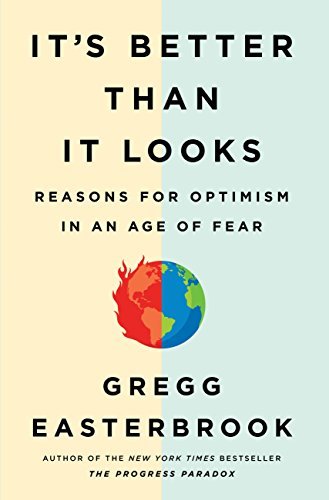What do you think?
Rate this book


366 pages, Kindle Edition
First published February 20, 2018
Recent Census Bureau statistics show if lower taxes, higher benefits and consumer prices are taken into account, since 2000, middle-class buying power was rising at about the postwar average of about 3 percent per year.The above needs some fact checking before broadcasting. What sort of "higher benefits" was he including?
Backing up the charts was a study released that day by the Pew Research Center, a highly credible organization, reporting that the American middle class was "no longer the majority." Pew concluded that in 1971, 61 percent of Americans were middle-class; by 2015, just 50 percent were middle-class—no longer the majority. Broadcasts like this played a role in planting in the American public mind the "world is ending" sentiment underpinning the Trump victory the following year.
Those who dived into Pew's research saw that in 1971, 14 percent of Americans were in the upper bands of income, 25 percent in the lower bands; by 2015, 21 percent were upper-income, 29 percent lower. This meant more Americans going upward out of the middle class toward high income than going downward toward low income; more Americans were vanishing up from the middle class than were falling down. A subsequent Pew Research Center study would show there are more cities and counties in the United States where middle-class families of all races are going upward economically than are going downward. Most European Union nations exhibit similar numbers—headed-up exceeds headed-down. Positive details such as these tend to be skipped to focus on the scary tease that the middle class has stopped being the majority—though remaining the largest demographic, with the lock on political clout. (p83)
The problem is that at every turn and by every measure, our projections are usually not only off, but very off. We use less land to grow more food. We have higher life expectancy than ever, thanks to the reduction of deadly diseases and effective treatments for such infirmities. Crime is trending downward almost everywhere in the world. Incomes are rising worldwide. Cars & factories run more efficiently than ever anticipated. Acid rain has become a non-issue.
The list could go on, but the long and short is that we tend to focus on bad things, and exaggerate them. Instead, we ought to recognize that there are still plenty of "issues" to solve, but also be able to do so optimistically. Easterbrook, rightly, points out that human ingenuity should be seen as a resource for solving our problems, not as a drag on our attempt to solve problems. An important point to be sure.
The first half of the book deserves 5/5 stars. There are some laugh out loud stats, which cut across the grain of the prevailing media narratives on various topics. However, the second half was 1.5/5 stars. Easterbrook floats some ideas that just need to be round filed (i.e. UBI, same-sex parenting as a good thing, and some other stinkers). That said, he does a great job of pointing out that a pessimistic outlook would make us think that everything is going to the dogs. I'll leave off with this insightful quote:
"Groups that sink into siege mentality usually wind up on the margins, while optimists slowly achieve their goals." Gregg Easterbrook.